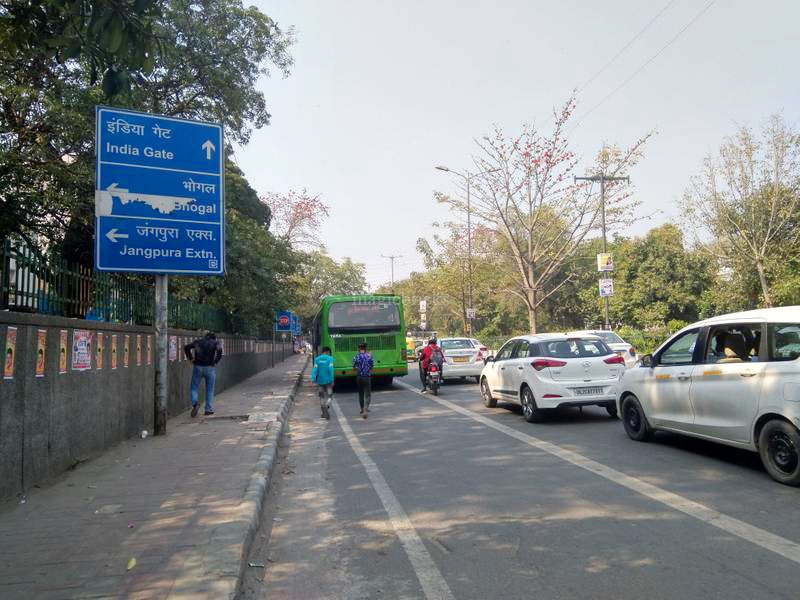Even though Delhi has been on the world map for over 100 years, there are still many different theories about how the name Delhi came to be. The colorful history behind Delhi’s names, from Connaught Place and Chawri Bazaar to Shahdara, is not to be missed.
The word “Delhi’s” etymology is still shrouded in legends. The most well-known being comes from Dilli, a distorted form of dehleez or dehali (meaning threshold). As a result, the city’s name became symbolic of a location that serves as the entrance to the Indo-Gangetic plain.
Few people are aware, however, that Delhi may also have gotten its name from the myth surrounding King Anangapala II, who is said to have built an iron pillar on a flimsy foundation. The pillar and his kingdom were later regarded as dheela due to the king’s lack of confidence (meaning loose).
Continue reading to learn the origins of the names of various Delhi locations.
Connaught Place

The most well-known CP in Delhi was built in 1933 and named in honor of Arthur, Duke of Connaught (the son of Queen Victoria and Prince Albert), during his visit to Delhi. It’s interesting to note that CP lacks “I” and “O” blocks! The reason for that is that they could be mistaken for the numbers 1 and 0, which is both silly and intriguing.
Chawri Bazaar

This location, which was named after the Marathi word for “meeting place” (chawri), was also another Old Delhi shopping hotspot. A “sabha” would be held here in front of a noble’s house to try and settle disputes. Another urban legend holds that people used to congregate here to watch courtesans dance while giving them “chavannis,” leading to the evolution of the term “chavannis” into “chawri.”
Jangpura

There is yet another intriguing tale to be told about Delhi’s Jangpur neighborhood. A British officer named Young, the deputy commissioner of Delhi was tasked with moving the residents of Raisina village so that the grand structures of the state could be built along Rajpath. He established these people in a colony known as “Youngpura,” which later came to be known as Jangpura.
Ballimaran

The Hindi words “Balli” and “Maran” refer to the oars of a boat and the act of steering oars, respectively, and are named after the boatsmen of the Mughal era. Boats were used during the Mughal era to travel between Red Fort and Fatehpuri mosque. However, the streets in what is now Ballimaran were too narrow for a boat to travel. Ballis were used in their place as a result. The president of RWA Ballimaran, Muhammed Masir, 61, explains how Ballimaran came to have its name.
Chirag Dilli

According to legend, saint Nizamuddin of Delhi blessed one of his most cherished students so that he could light lamps in the neighboring village using water rather than oil. As the sultan had dispatched the majority of the workers during the construction of the Tughlakabad fort, he worked this miracle. Nasiruddin lit lamps at night so that the workers could come and work for the Nizamuddin Saint’s Stepwell. After pulling off this feat, Naseeruddin was given the name “Chirag,” and the neighborhood was given the name Chirag Dilli. Chirag (which means “lamp”)
Also, read Netflix Tudum The Global Fan Event
Jantar Mantar

Yantra Mantra, which means tools and formulas, has been corrupted to form the name. One of the five structures built by Maharaja Jai Singh II of Jaipur, it was created after Muhammad Shah, the Mughal emperor, tasked him with updating the astronomical tables and calendar. There are 13 astronomical and architectural instruments in the monument.
Shahdara

Shahdara means “door of kings” in Urdu. The name is derived from two Persian words, Shah, which means kings, and Dara, which means door. Another myth claims that Shahdara descended from Shahi Dara or Dariya. It was close to the Yamuna River, which was used to transport goods to Delhi. In fact, for the same reason, other locations in India were also given the name Shahdara.
Garstin Bastion Road

There used to be five brothels in Delhi. British commissioner Garstin combined them into a single red-light district. The road is known as Garstin Bastion Road or GB Road in his honor. “GB Road bears Garstin’s name. It was a location where “mujras” took place. According to shop owner Satish Sundra, there were actually three locations where different classes could view mujras: Qutub Road for the lower classes, GB Road for the middle classes, and Chawri Bazaar for the upper classes.
Siri fort

The fort was given the name Siri because its foundation was made of the severed heads (‘sir’ means head in Hindi) of roughly 8,000 Mongol soldiers who died in the war, according to the legend of Ala-ud-Din Khilji’s military exploits. The Mongols were defeated by Khilji. The soldiers were executed by beheading, and the foundation of the Siri Fort was built using their heads. According to Om Prakash Tanwar, proprietor of Siri Fort Associates, “the fort’s remnants are still there for all to see.”




























